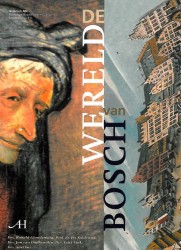
Van Oudheusden 2001b
“De Verloren Zoon, ofwel de waardering voor Jeroen Bosch en zijn werk in ’s-Hertogenbosch” (Jan van Oudheusden) 2001
[in: Jan van Oudheusden and Aart Vos (eds.), De Wereld van Bosch. Historisch ABC – Archeologie Bouwhistorie en Cultuur ’s-Hertogenbosch – volumee 4, Adr.Heinen, ’s-Hertogenbosch, 2001, pp. 134-161]
We know nothing about Bosch’s commissions, except the one by Philip the Fair in 1504. The ’s-Hertogenbosch chroniclers and also Albrecht Dürer don’t mention Bosch. There are no direct references to his work in the municipal accounts of ’s-Hertogenbosch. Nevertheless, he was appreciated a lot, even by the highest circles. Owners of his work were: Margaret of Austria, Henry III of Nassau, Philip of Burgundy, Rudolf II and his brother Ernest, Philip II of Spain. The numerous sixteenth-century imitators also prove that Bosch was successful. Until the seventeenth century the church (by then cathedral) of St John accomodated a number of Bosch paintings. But they were all lost. In 1615 the bishop visited St John’s. One of the canons was shocked by the nudes in a Last Judgment and a Creation of the World. In 1626 the next bishop of ’s-Hertogenbosch, Michael Ophovius, tried to purchase a Bosch altarpiece from the Brussels Dominican monastery.
After 1629 the memory of Bosch began to fade away in his hometown. The historian Jacob van Oudenhoven refers to him in 1670, as did the eighteenth-century historian Van Heurn (he saw a Temptation of St Anthony by Bosch in the house of the ’s-Hertogenbosch Pensionary Maarten Bowier). In 1663 a certain Jan de Backere owned a Crucifixion by Bosch. In the nineteenth century the historian Jan Hezenmans regrets that no Bosch paintings can be found in ’s-Hertogenbosch. In the seventeenth and eighteenth century his name pops up now and then, but he was considered incompehensible and repulsive. It was not until the nineteenth century, under the influence of Romanticism, nationalism and the increasing awareness of the bourgeoisie, that the paintings and their creator slowly came to notice again.
The Brussels archivist Alexandre Pinchart discovers the 1504 commission in 1858. In 1866 Jan Hezenmans spends some lines on Bosch in a book about the St John’s cathedral (also articles about Bosch in 1874 and 1888). Peculiar remarks about Bosch in the 1874 edition of the Winkler Prins Encylopaedia. Bosch figures in a historical procession (July 1885). In 1909 a street is named after Bosch. In 1922 a statue of Bosch near a bridge (destroyed during the Second World War). In 1930 a new statue in the Marketplace (on that occasion also a small exhibition). In 1936 an exhibition in Rotterdam. The figure of Jan Mosmans. The Bosch exhibition of 1967. Only 16.000 visitors from ’s-Hertogenbosch (the total amount of visitors was 270.900). This did not result in a Hieronymus Bosch Study Center. It did stimulate father Gerlach’s research, though. Up to 2001 ’s-Hertogenbosch has not really done very much for Bosch. Is this going to change after 2001?
An interesting and original contribution, not only relevant to the people from ’s-Hertogenbosch (although Van Oudheusden somehow makes them his target here). It makes the reader wish for more: a history of Bosch reception throughout the centuries but not only limited to ’s-Hertogenbosch.
[explicit]